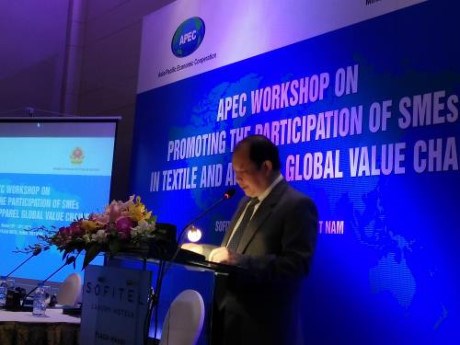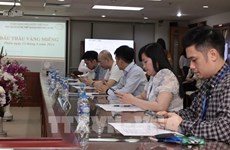Garment-textile firms urged to gear up for global value chain
Vietnam’s garment-textile sector still plays a passive role in the global supply chain (GVC) as they mainly specialise in straightforward production stages without studying market demands.
 Deputy Minister of Industry and Trade Nguyen Cam Tu (Source : VNA)
Deputy Minister of Industry and Trade Nguyen Cam Tu (Source : VNA)Addressing the event, which aims to disseminate the Asia-Pacific Economic Cooperation (APEC) forum’s plans and strategies on the GVC, Deputy Minister of Industry and Trade Nguyen Cam Tu said that local businesses have taken no initiative in seeking partners and expanding the market.
According to the official, the GVC refers to a set of necessary activities to create a finished product or a service, from the first step of conception to delivery to the end customer.
Joining the GVC will help businesses know where they are standing in the international arena in order to select suitable stages to participate in, thus maximising their benefits, Tu noted.
Pham Quynh Mai, from the Multilateral Trade Policy Department under the Ministry of Industry and Trade, pointed out difficulties facing Vietnam’s garment-textile sector which, she said, mainly relies on materials imported from foreign countries, especially China.
Besides, domestic firms have yet to pay much heed to how their foreign peers and rivals do business, thus they are slow to revamp their production methods and technologies, and raise their competitiveness, she added.
In fact, a lot of support industry companies have joined hands with local garment-textile enterprises which, however, have failed to seek markets for their products, resulting in the collapse of the collaboration, Mai said.
It is the problems in connectivity between businesses that hinder sustainable development of the country’s garment-textile sector as well as its engagement in the GVC, she noted.
The workshop heard that the global garment-textile production scale will double by 2030. The Asian region alone is expected to expand its production by 2.4 times and make up more than 60 percent of the world’s garment-textile output.
Moreover, the Trans-Pacific Partnership (TPP) agreement and other free trade agreements will turn Vietnam into a destination for the global supply chain, Mai said, suggesting the country make the best use of this opportunity.
To raise the sector’s competitive edge when joining the GVC, the Vietnam Textile and Garment Group (Vinatex) also suggested businesses overhaul their production and management strategies, and build a quality troop of labourers, while teaming up with each other to create a national supply chain.
In 2015, Vietnam remained in the top five largest apparel exporters, raking in 27 billion USD, which was 500 million USD short of the target.
Vinatex General Director Le Tien Truong estimated the sector’s export turnover for this year at 29.5-30 billion USD.-VNA













